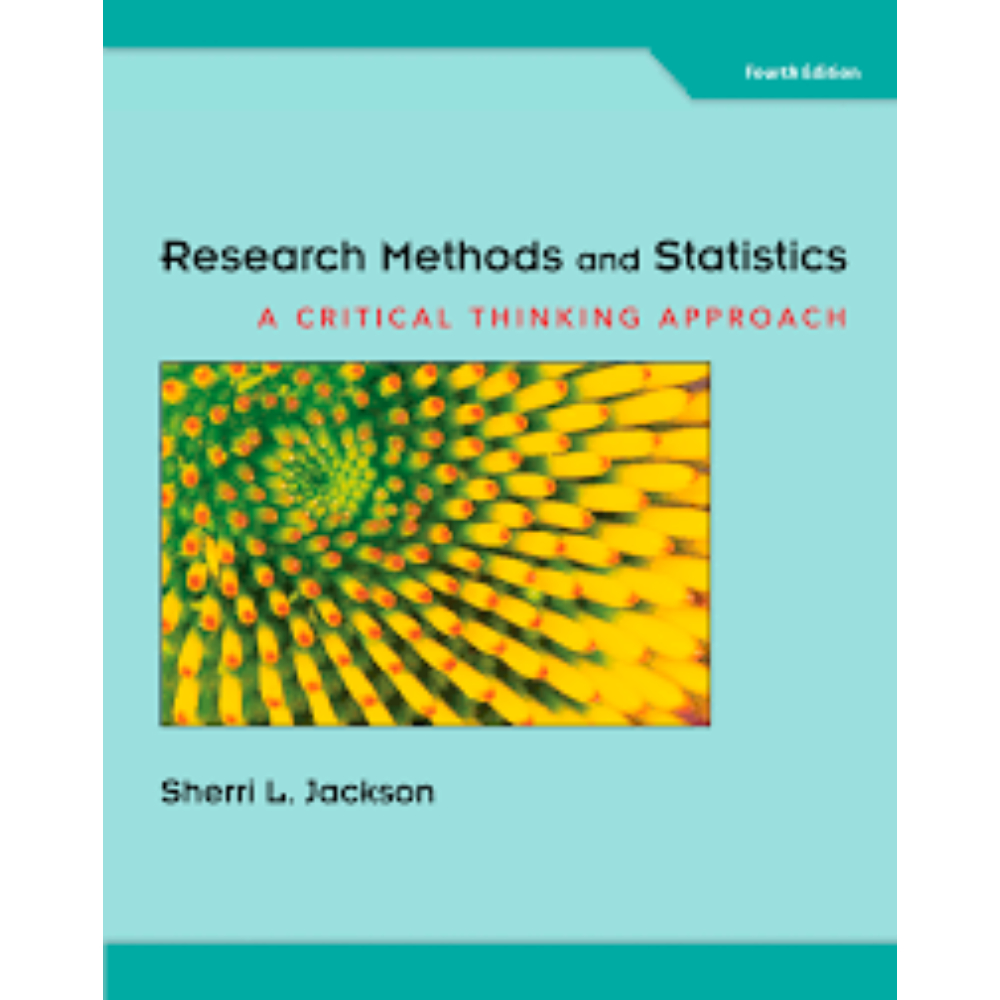Research Methods And Statistics A Critical Thinking Approach, 4th Edition By Sherri L. Jackson – Test Bank
$55.00
Research Methods And Statistics A Critical Thinking Approach, 4th Edition By Sherri L. Jackson – Test Bank
You will receive this product within 24 hours after placing the order
Research Methods And Statistics A Critical Thinking Approach, 4th Edition By Sherri L. Jackson – Test Bank
Multiple Choice Questions
1. _____ is a mean of setting a more stringent alpha level in order to minimize Type I errors.
a. ANOVA
b. The Bonferroni adjustment
c. An F-ratio
d. The sums of squares
Answer: b
2. Using designs with more than two levels of an independent variables allows researchers to:
a. compare more than two kinds of treatment in one study.
b. compare two or more kinds of treatment with a control group.
c. compare a placebo group to the control and experimental groups.
d. accomplish all of the other alternatives.
Answer: d
3. Systematic variance may consist of:
a. both experimental effects and confounding variables.
b. experimental effects.
c. confounding variables.
d. experimenter effects.
Answer: a
w4. If between-groups variance is small, then we have not observed:
a. experimenter effects.
b. an effect of the dependent variable.
c. enough samples.
d. an effect of the independent variable.
Answer: d
5. Whenever the F-ratio is near 1.00 it means that:
a. a mistake has been made in the computation.
b. there are large systematic effects present.
c. the experimental manipulation probably had the predicted effects.
d. the between-groups variation is no larger than would be expected by chance alone and no
larger than the within groups variance.
Answer: d
6. The larger the within-groups (error) variance:
a. the more difficult it becomes to show the effects of experimental variance.
b. the easier it becomes to show the effects of experimental variance.
c. the more difficult it becomes to perform the F test.
d. the easier it becomes to show a causal effect of the independent variable on the dependent
variable.
Answer: a
w7. When conducting an experiment with more than two levels of the independent variable, a _____ is recommended over a _____ because of the reduced risk of a _____.
a. one-way ANOVA; t-test; Type II error
b. one-way ANOVA; t-test Type I error
c. t-test; one-way ANOVA; Type II error
d. t-test; one-way ANOVA; Type I error
Answer: b
8. The null hypothesis for a one-way randomized ANOVA states:
a. H0: 1 = 2 = 3.
b. H0: 1 2 3.
c. Ha: 1 = 2 = 3.
d. Ha: 1 2 3.
Answer: a
9. The alternative hypothesis for a one-way randomized ANOVA states:
a. H0: 1 = 2 = 3.
b. H0: 1 2 3.
c. Ha: 1 = 2 = 3.
d. Ha: 1 2 3.
Answer: d
10. If the null hypothesis for an ANOVA is true, then the F-ratio should be:
a. greater than 5.00.
b. a negative number.
c. 0.00.
d. 1.00.
Answer: d
w11. The F-ratio is a ratio of _____ variance over _____ variance.
a. between-groups; within-groups
b. within-groups; between-groups
c. total; between-groups
d. total; within-groups
Answer: a











Reviews
There are no reviews yet.